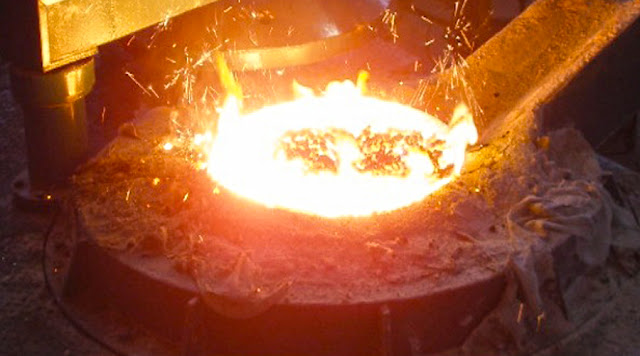Induction Furnace Quality - Induction Melting Furnace
In recent years, the iron and steel, metal and other smelting industries have been developing day by day, and the global foundries and melting furnace manufacturers have also increased significantly. While demand and supply are increasing, the induction furnace quality has become the primary consideration for many customers.
Before choosing a good quality induction furnace and a responsible supplier, we need to know more about this product so that we can choose.
What is an induction furnace?
Induction furnaces are generally divided into induction heating furnaces and melting furnaces.
The induction furnace is an electric furnace that uses the induction current generated by the induction coil to heat the material.
If the metal material is heated, it is placed in a crucible made of refractory material. If heating non-metallic materials, place the material in a graphite crucible.
Principle & Features
In an induction furnace, there is an induction coil that creates an alternating magnetic field when it is energized with alternating current. The metal charge to be heated is placed in an alternating magnetic field, and an electric current is generated in the metal charge due to electromagnetic induction. Due to the resistance of the metal charge, the metal charge will be heated when the current passes through it. The induction furnace mainly uses this heat to heat and melt the metal charge.
To carry out induction heating, two basic conditions must be met: the first is to use alternating current; the second is that the object to be heated must be a metal material.
In an induction furnace, the power transmitted to the metal charge is proportional to the resistivity of the metal charge, and the heating effect of high resistivity metal materials (cast iron, steel, etc.) is better than that of low resistivity metal materials (such as copper, aluminum); Ferromagnetic materials it has a better heating effect than non-ferromagnetic materials. During the heating process, the power obtained by the charge will also change due to the change of resistivity and permeability.
The resistivity of general metal materials increases with the increase of temperature, the permeability of non-ferromagnetic materials has nothing to do with temperature, and the permeability of magnetic materials has little relationship with temperature before the Curie point, but sharply after the Curie point. decline.
Classification
Classification of induction furnace
Induction electric furnaces can be divided into three types according to the power frequency: high frequency furnaces, intermediate frequency furnaces and power frequency furnaces;
According to the purpose of the process, it can be divided into melting furnace, heating furnace, heat treatment equipment and welding equipment, etc.;
It can also be classified according to its structural form and transmission mode. Commonly used induction furnaces are traditionally classified into heart induction melting furnaces, centerless induction melting furnaces, vacuum induction melting furnaces, induction hardening equipment and induction head heating equipment.
Different induction furnaces have different characteristics and configurations.
Therefore, when choosing an induction furnace, the induction furnace quality prerequisites depend on the furnace type, smelting raw materials, power size, and design and installation. Most importantly, choose a reliable supplier who can provide professional services as well as professional solutions and high-quality products. After all, production safety is the primary productive force.
We hope that every melting furnace you buy can be produced safely and with high quality.
Above is induction furnace quality and others. Any questions or needs, please feel free to contact us, we will serve you wholeheartedly!
No matter what kind of induction melting furnace, EAF, SAF, LF, etc., Xi'an Hani Tech will provide suitable, professional, efficient and low energy consumption induction furnaces to every customer according to specific raw materials and melting requirements.



Comments
Post a Comment